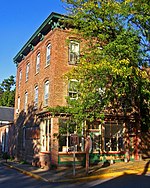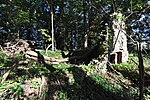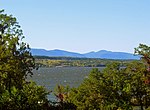Rhinecliff, New York
Census-designated places in Dutchess County, New YorkCensus-designated places in New York (state)Hamlets in Dutchess County, New YorkHamlets in New York (state)New York (state) populated places on the Hudson River ... and 3 more
Poughkeepsie–Newburgh–Middletown metropolitan areaRhinebeck, New YorkUse mdy dates from July 2023

Rhinecliff is a hamlet and census-designated place (CDP) located along the Hudson River in the town of Rhinebeck in northern Dutchess County, New York, United States. As of the 2010 census, the population of Rhinecliff was 425.
Excerpt from the Wikipedia article Rhinecliff, New York (License: CC BY-SA 3.0, Authors, Images).Rhinecliff, New York
Kelly Street,
Geographical coordinates (GPS) Address Nearby Places Show on map
Geographical coordinates (GPS)
| Latitude | Longitude |
|---|---|
| N 41.919444444444 ° | E -73.951111111111 ° |
Address
Kelly Street 86
12574
New York, United States
Open on Google Maps










